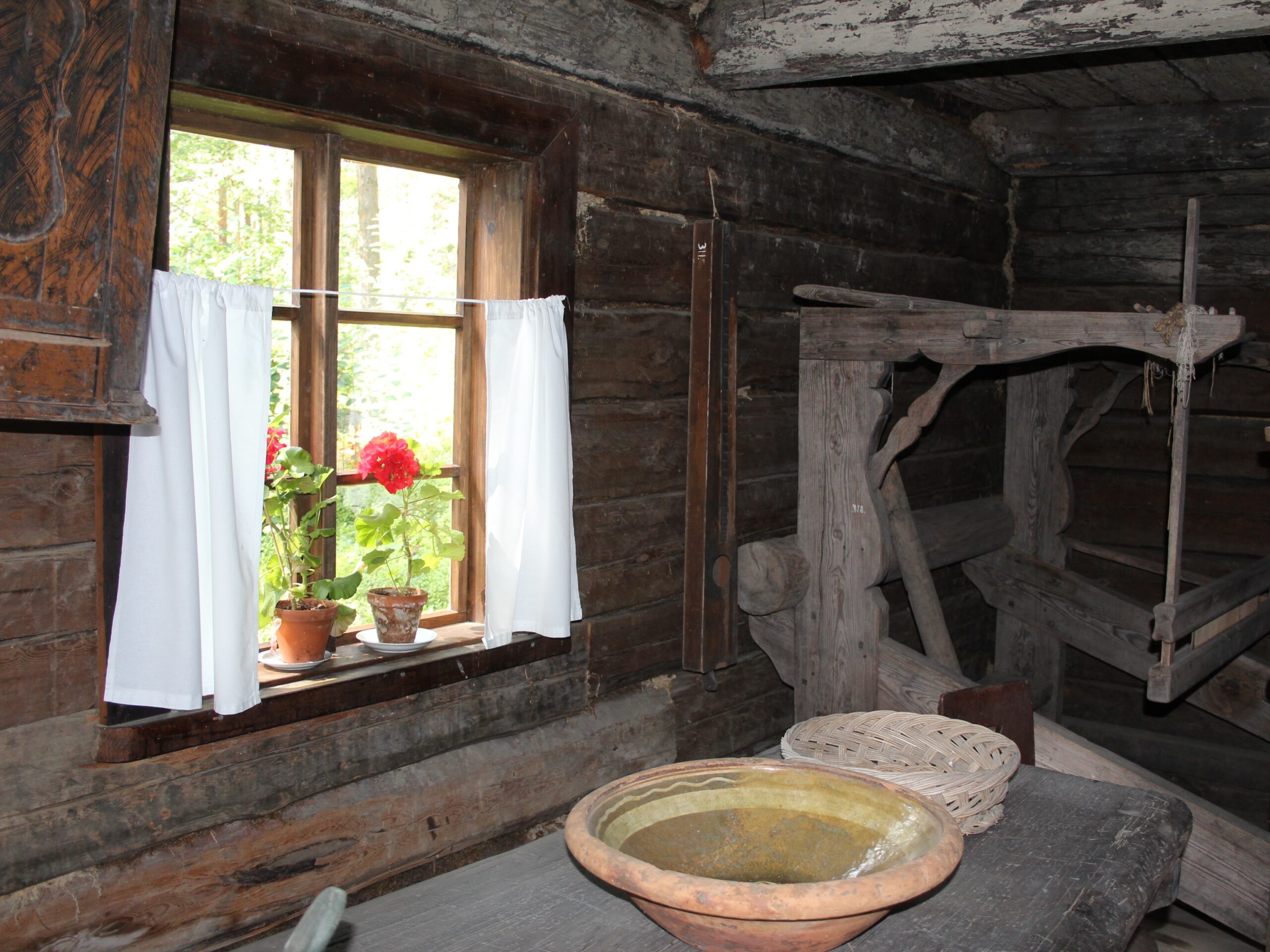
Luopioinen Local History Museums
The Luopioinen Local History Museums are located in the parish village of Luopioinen.
It is a former parish granary, a loan grain store, which was converted into a museum by the Kukkia-Seura in the 1950s.
The museum objects are mainly from the 19th century.
In addition, next to the local history museum is the Mikkelinmäki Open Air Museum,
which consists of various museum buildings.
Welcome to visit!

The parish village of Luopioinen has two interesting museums next to each other: the local history museum and the Mikkelinmäki open air museum area.
Te two museums are complemented by the church museum, which is located in the church right next to the local history museum.
The museums are open in the summer from Midsummer to the beginning of August.
Local History Museum
Address: Niementie 2, 36760 Luopioinen
Open: Tue-Sat 11:00-15:00
Mikkelinmäki Crofter Museum
Address: Leikkuuhuoneentie, 36760 Luopioinen
Open: Wed-Sat 11:00-15:00.
The museums are also open at other times by appointment. Inquiries: Johanna Järvinen, tel. 040 518 7767.
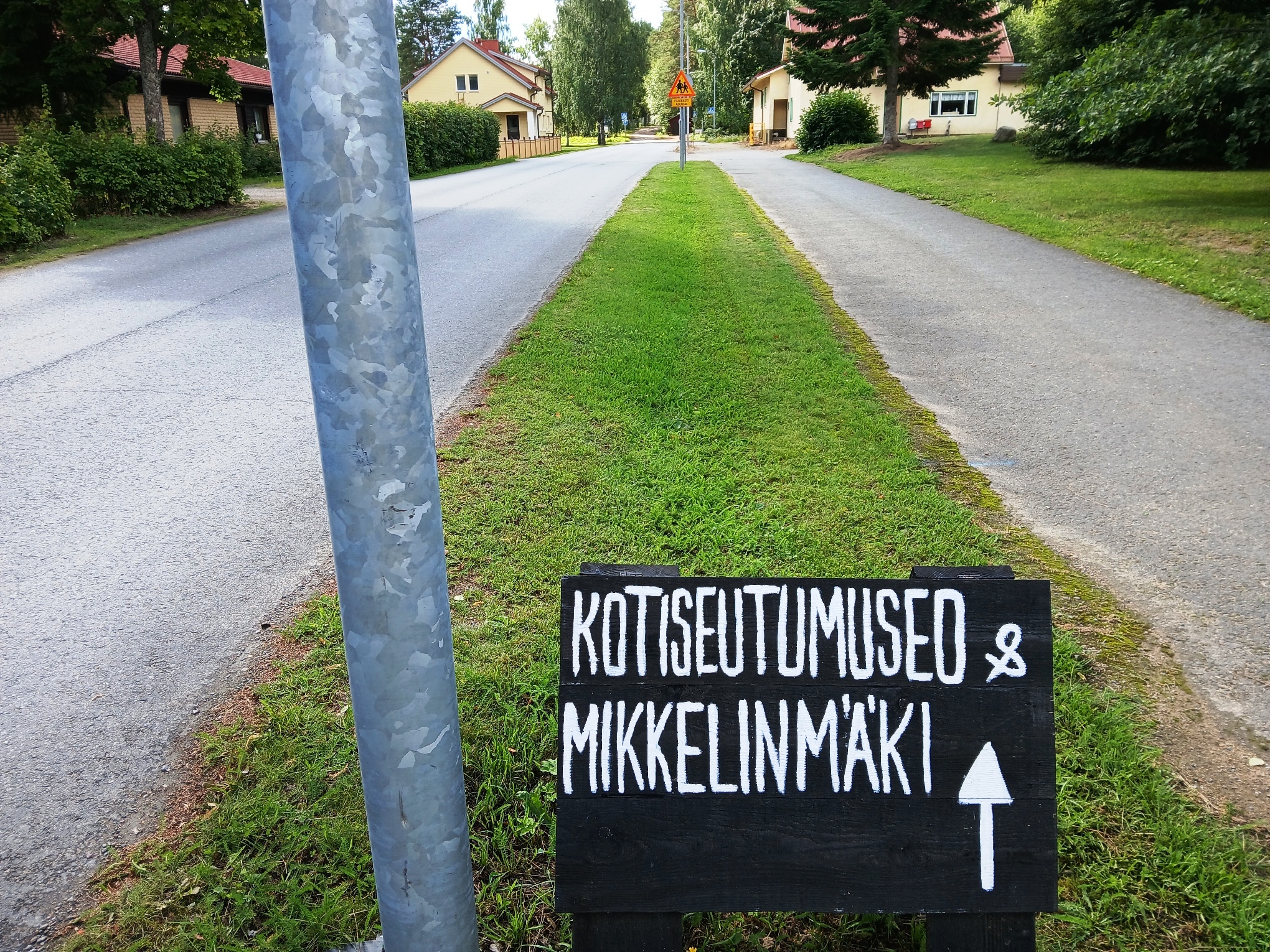
Local History Museum
The local history association Kukkia-Seura ry, founded in 1952, asked the then Luopioinen parish council to donate an empty grain warehouse located in the Luopioinen parish village. The parish warehouse had been built on the churchyard, next to the church, in 1854. In the early years, the warehouse served as a loan grain warehouse, in the early 1900s as a municipal warehouse, and since then it has been empty.
The parish municipality donated the warehouse to the Kukkia-Seura in 1954, and two years later the parish warehouse was opened as the Luopioinen local history museum.
The necessary modifications had been made to the warehouse under the supervision of the Finnish Antiquities Authority.
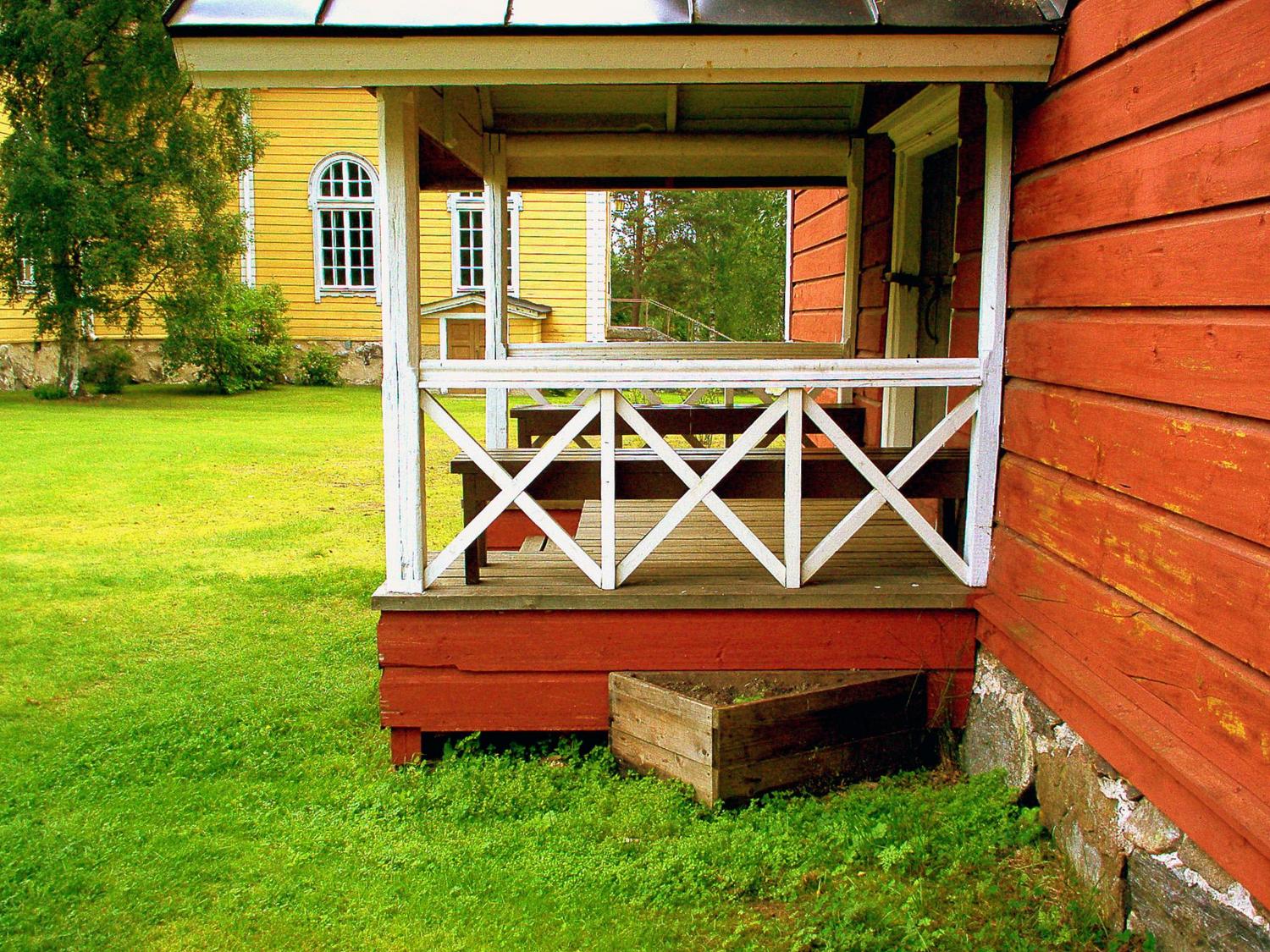
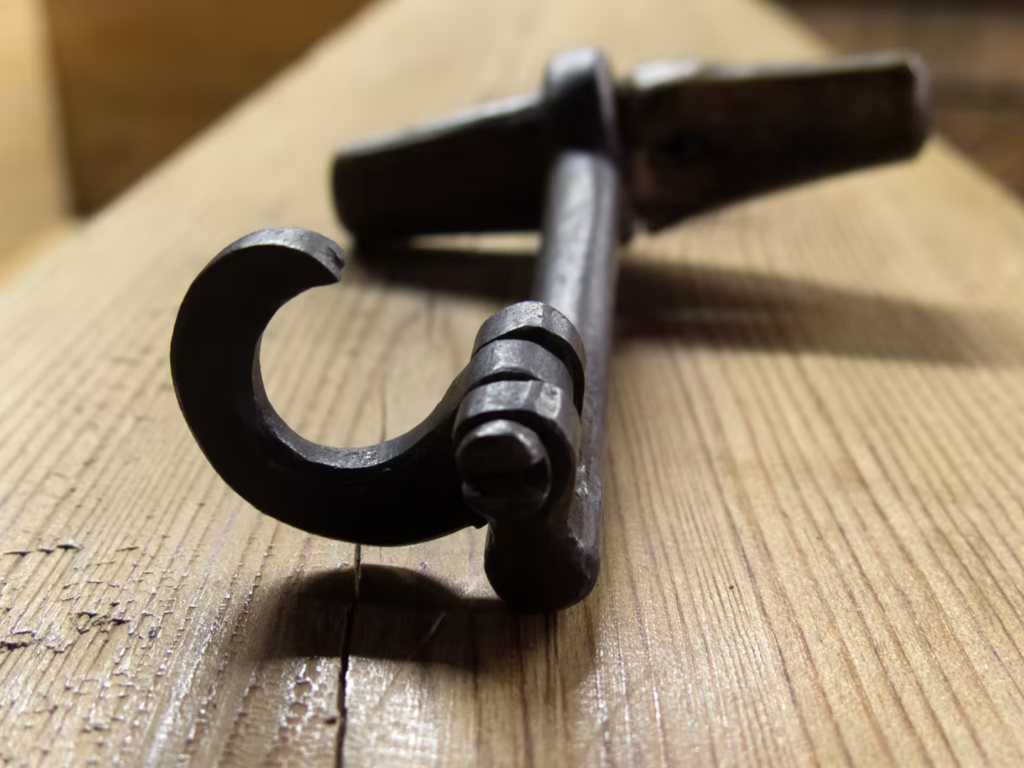
Originally a two-story dark warehouse building, it had become a three-story and electrified museum.
The Luopioinen Local History Museum has about 2,500 catalogued objects. There are old health care tools such as a phleboscope and a toothpick, books from the 18th century and a dramatic letter from a young woman to the young man who abandoned her.
Not all of the objects are visible, some are in such poor condition. The museum has objects from the Iron Age to the 1970s. Most of them are from the 19th century or early 20th century.
The oldest objects are stone axes made in the 19th–17th centuries BC.
On the second floor of The Luopioinen Local History Museum the is an authentic old circuit school with benches stored.
A circuit school was a type of school in which there was no school building of its own, but rather a teacher moved from village to village to teach children, usually in one of the village houses, a tavern or, for example, a parsonage.
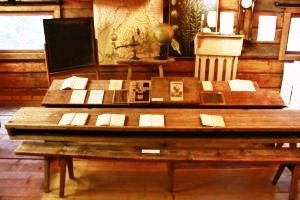
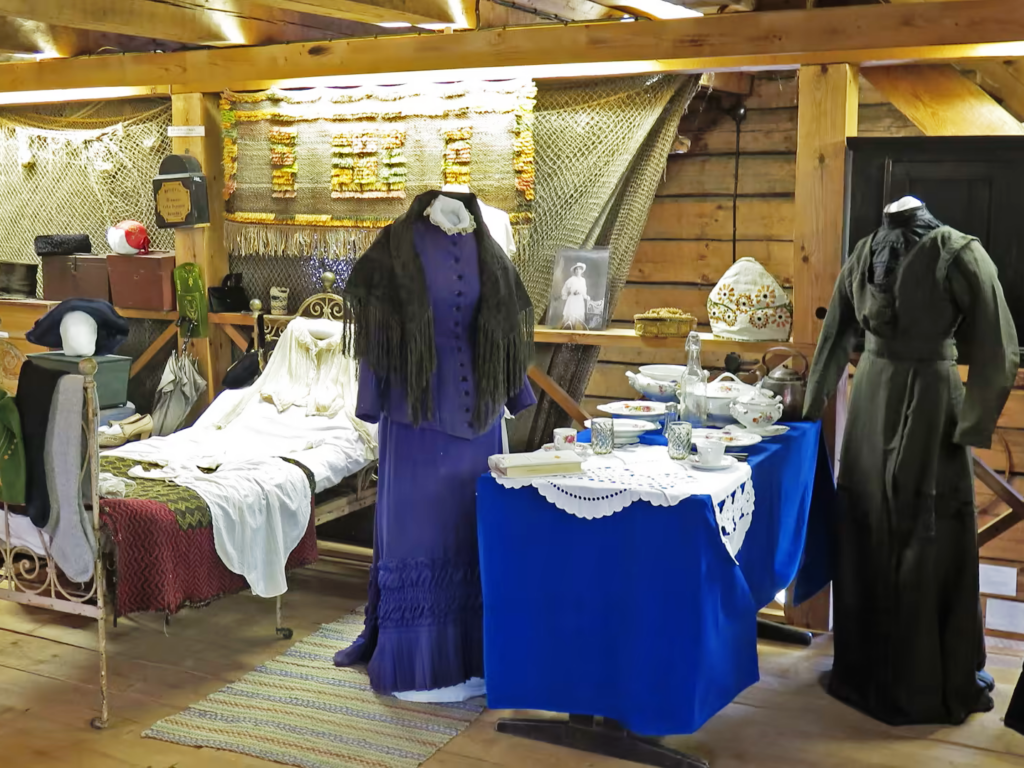
Circuit school activities began in Finland in the 17th century during the Orthodox period. Circuit schools were particularly popular in the late 19th century and early 20th century.
Until 1921, circuit schools were an important provider of primary education.
.
One of the museum’s most interesting objects is a miniature model of the Luopioinen chapel village made by Olavi Ahonen in 1900.
It shows that the church, village street and market square have been in the same place for over 100 years.
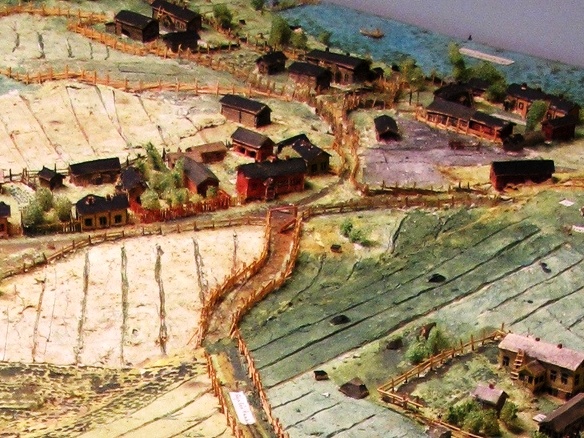
Open Air Museum
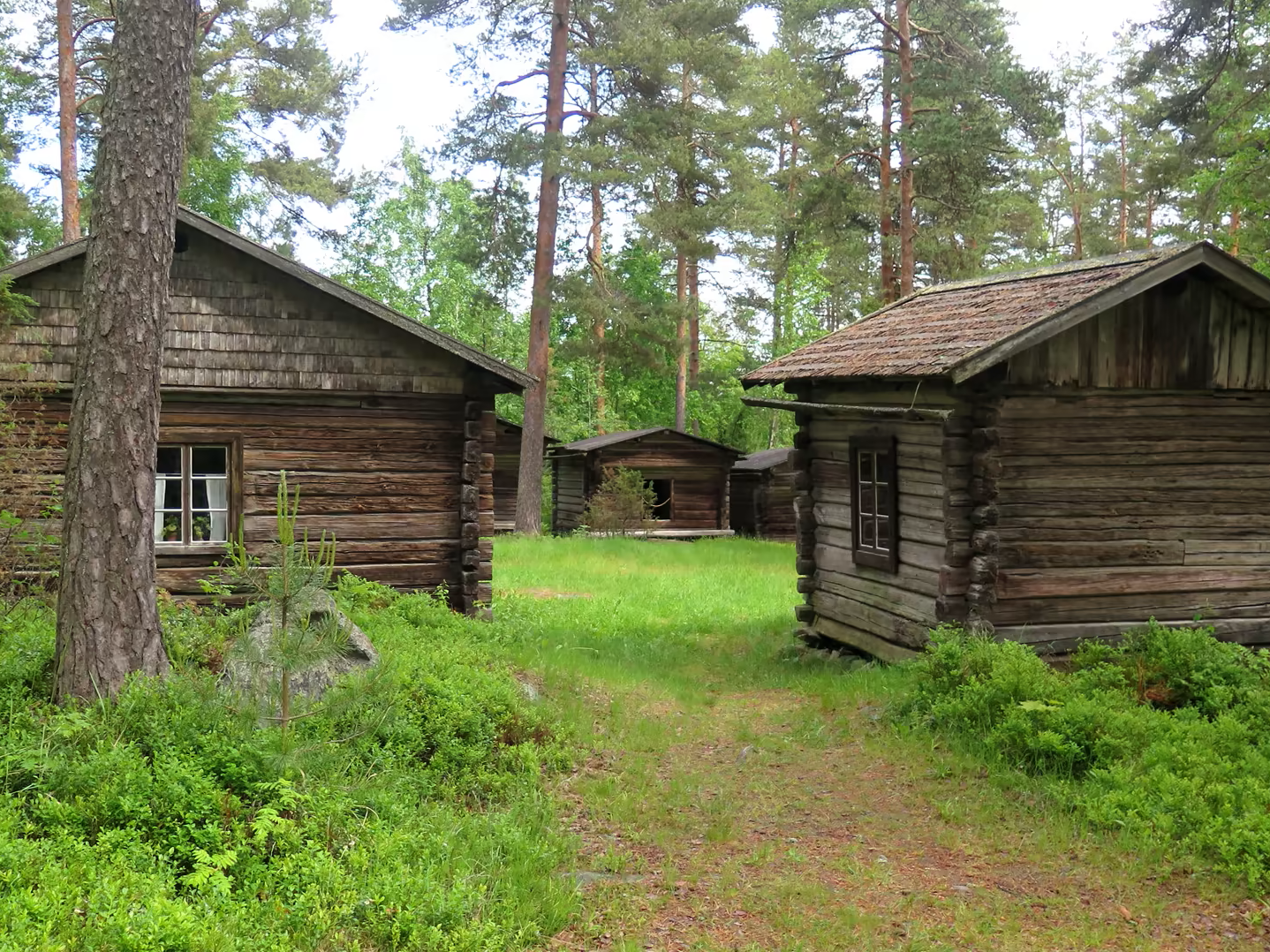
At the same time as the local history museum was being renovated, the Kukkia Society members drew their attention to the old sacred place next door, Mikkelinmäki, where, among other things, there was a sacrificial spring and an Iron Age sacrificial stone.
sThe sacrificial stone is covered in moss, but the holes in the stone are still visible. According to Finnish folklore, grain was left at the sacrificial site for the deceased in the family or for the farmers in the hope of a good harvest.
In 1957, the first buildings, the so-called Hirvelä hut and the maid’s barn, were moved to Mikkelinmäki.
Hirvelä hut, the main building of the Hirvelä croft in Ämmätsä, was built in the early 19th century and its other end is a former smoke house.
Some house a log house where the heating was provided by a stone-built stove, which had no chimney, but the smoke remained inside the living quarters.
The smoke house became a common form of housing across the vast Finnish peninsula after its wilderness areas were settled more permanently in 1500. Living in smoke house was very common in the 19th century and in parts of the country until the early 20th century.
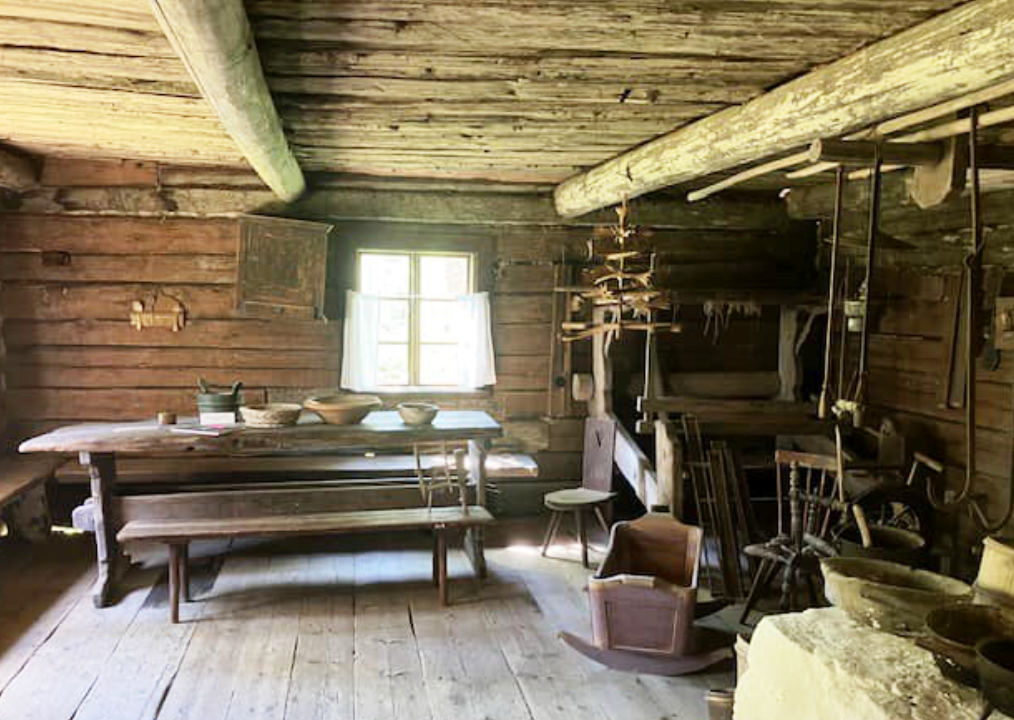
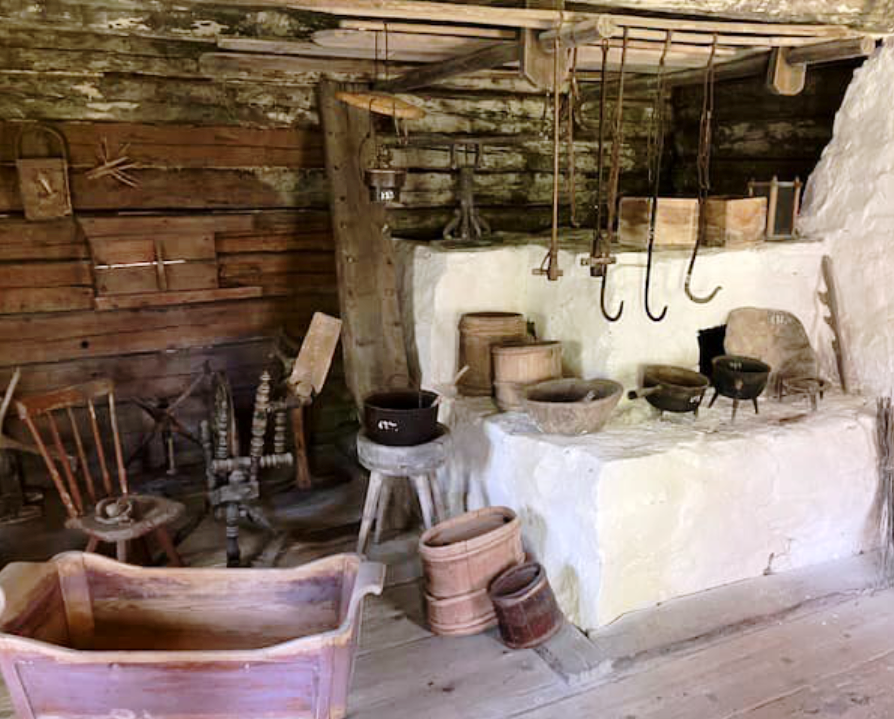
Hirvelä hut has a tragic past.
The eldest son of the family had unknowingly contracted dysentery in Russia.
When he returned home in August 1916, the entire family died of the infection, except for the owner (Severi Hirvimäki) and one daughter. Within two weeks, Ida’s mother and six children died.
The oldest of the barns in the open-air museum is the so-called Maid’s Barn from the 1750s.

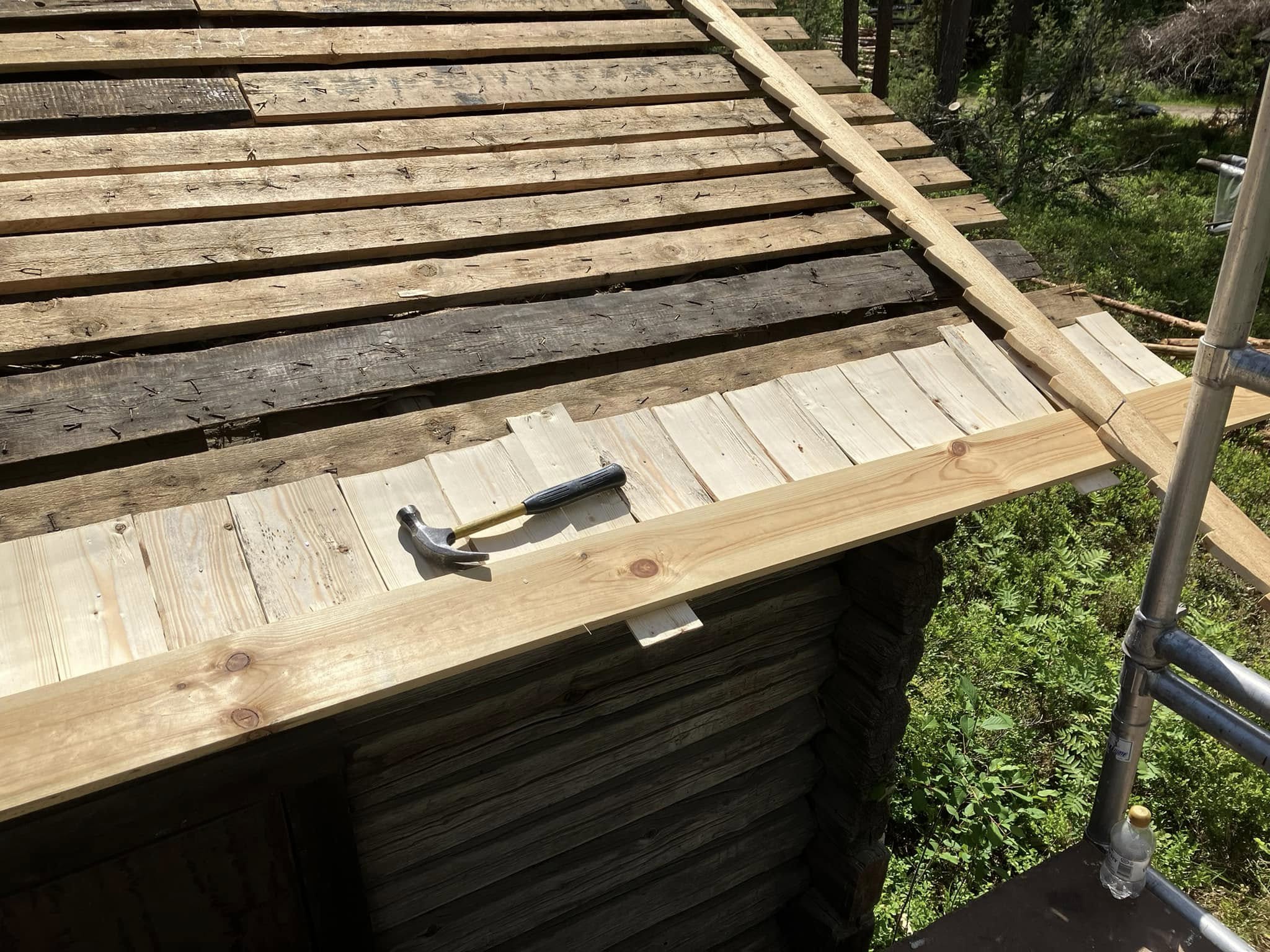
You can see an old traditional shingle roof in the open-air museum.
A shingle roof is a wooden roof covering used from the early 19th century to the 1960s, made of interlocking shingles, i.e. thin, slatted pieces of wood.
The picture shows the renovation of the main roof of the smoke sauna in the Mikkelinmäki open air museum.
Church Museum
The small church museum is worth visiting just for the rare wooden crosses. Gravestones over 100 years old have survived from a time when stone tombstones were not yet used.
A part of the dismantled shingle roof is hung on the wall of the church museum.
In addition, there are disused candlesticks, hymn books, catechisms and letters of instruction. The most valuable objects, such as an 18th-century mass sock and silver éylät boxes, are in locked glass cases.
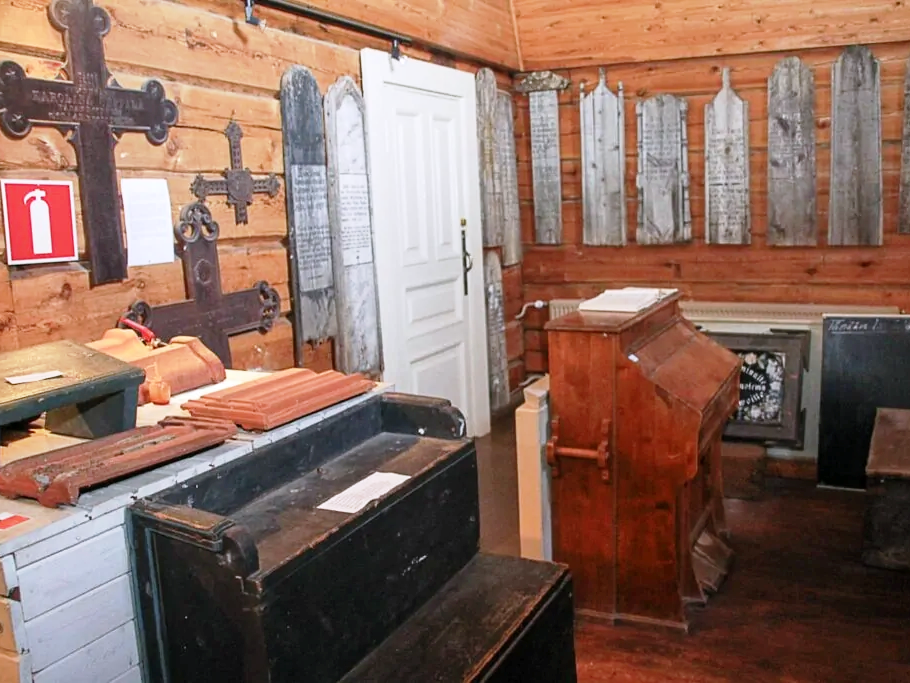

The museum also houses a pair of coffins used in funerals and a massive collection chest.
The organ from the Luopioinen church from 1890 is valuable.


